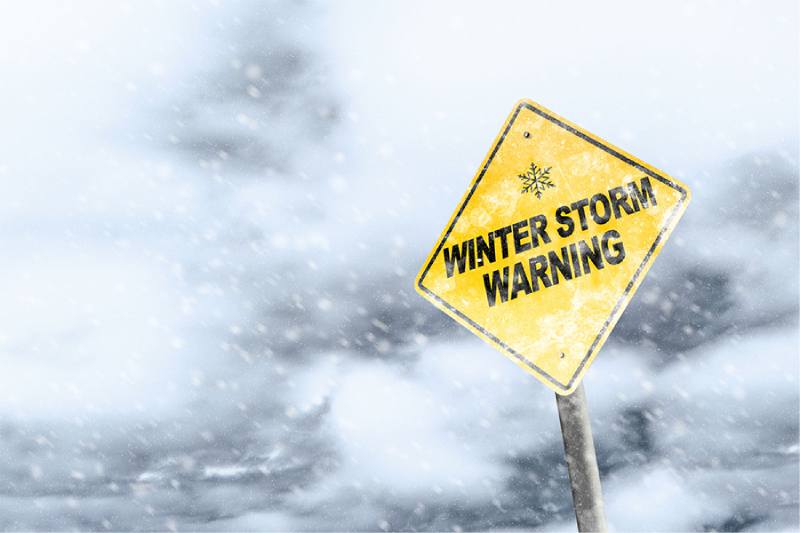
Winter is here, and with it comes the possibility of dangerous winter storms. The National Weather Service (NWS) has issued multiple winter storm warnings across the United States today. These warnings alert us to the risks of heavy snow, ice, and freezing rain. The storm can cause hazardous road conditions, power outages, and more. This article will cover Winter Storm Warning Safety Tips to help you stay safe, informed, and prepared for whatever Mother Nature throws your way.
A Winter Storm Warning is issued when a severe winter weather event is imminent. It means that dangerous snow, sleet, or freezing rain is expected to cause hazardous conditions. This could make travel nearly impossible. Heavy snow, accumulating ice, and freezing rain are all factors that can impact your safety.
When a warning is issued, it’s crucial to take immediate action. Conditions can change quickly, and staying safe should be your priority.
As of February 8, 2025, several regions are under Winter Storm Warnings. These areas are facing conditions that could bring heavy snow, freezing rain, and dangerous roadways.
Wherever you are, if you're under a Winter Storm Warning, it's essential to know how to respond and stay safe.
When a storm is on the way, the first thing you should do is stay informed. The weather can change rapidly, and knowing what to expect will help you make the best decisions. Here are some essential Winter Storm Warning Safety Tips to keep in mind.
Always check your local weather updates. Winter storms can shift quickly, and keeping an eye on forecasts will help you plan ahead. Watch for National Weather Service (NWS) alerts and pay attention to any changes in storm timing, intensity, and affected areas.
If you're in an area under a Winter Storm Warning, you should expect dangerous conditions soon. Check weather apps, listen to local news, or set up weather alerts on your phone.
Before the storm arrives, make sure you have everything you need. Winter storms often cause power outages and make travel difficult. You’ll want to be prepared in case you’re stuck indoors for a while. Here’s what you should have on hand:
Preparing your home with the right supplies will make it easier to ride out the storm.
If you must travel during a Winter Storm Warning, make sure your vehicle is ready. Snow, ice, and freezing rain can make driving extremely hazardous. Check these things before hitting the road:
In extreme conditions, it’s always safer to stay home. But if you must travel, having a well-prepared car is crucial.
One of the most important Winter Storm Warning Safety Tips is to stay indoors whenever possible. The storm can create slippery roads, low visibility, and icy sidewalks, all of which pose a significant risk to your safety. If you don’t need to go out, don’t.
If you need to leave, make sure you wear proper clothing. Bundle up in warm layers to protect yourself from the cold. Don’t forget gloves, a hat, and a scarf to cover your face. Frostbite can occur quickly in freezing conditions.
Power outages are common during winter storms. Snow and ice can bring down trees, power lines, and electrical poles, leaving entire neighborhoods in the dark. Here’s how to prepare:
During power outages, conserve energy by limiting the use of lights and electrical appliances. Always keep warm with blankets and extra layers.
Ice is one of the most dangerous aspects of a winter storm. Freezing rain can coat everything in a thick layer of ice, making surfaces extremely slippery. Be especially cautious when walking on sidewalks, driveways, or parking lots. If you must walk outside, wear shoes with good traction.
For drivers, ice can be deadly. Black ice—an invisible layer of ice on the road—is difficult to see but very slippery. Drive slowly and with caution. If the roads are icy, consider staying home until conditions improve.
If you have elderly neighbors, family, or friends, check on them during the storm. Winter storms can be particularly dangerous for older adults, especially those with mobility issues. Offer assistance if they need help getting food, water, or medications.
Once the storm hits, take these additional steps to stay safe:
Winter Storm Warning Safety Tips are essential for everyone who might be impacted by a winter storm. With proper preparation and caution, you can reduce your risk and stay safe during severe weather.
Make sure to stay informed, stock up on supplies, and always be prepared for power outages. Stay indoors if possible, and don’t travel unless necessary. The more prepared you are, the better you’ll be able to handle the storm and emerge safely when it’s over.
This news incorporates Winter Storm Warning Safety Tips to provide a clear, informative guide while optimizing for SEO. It’s designed for human readability with easy-to-follow advice for staying safe during a winter storm.